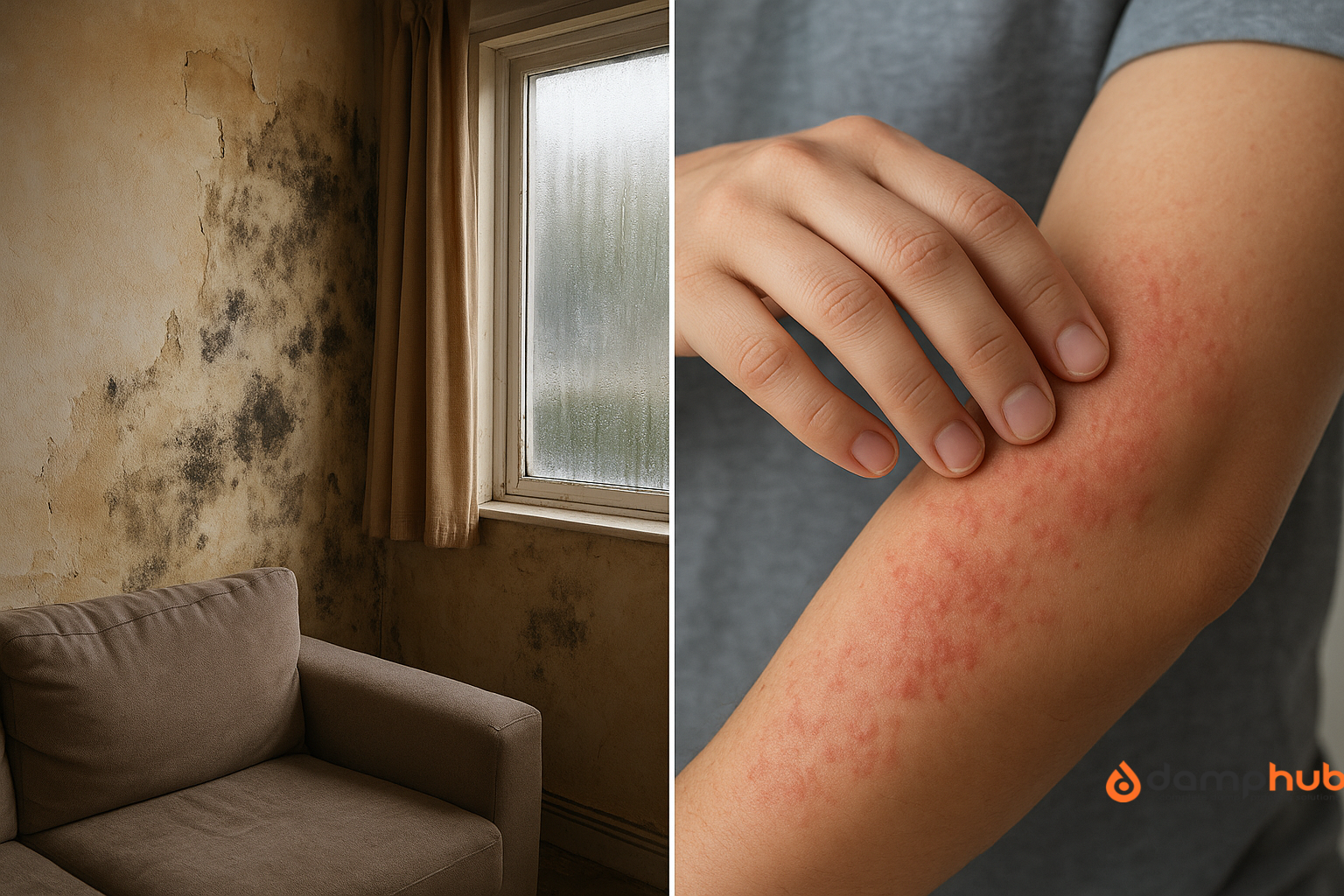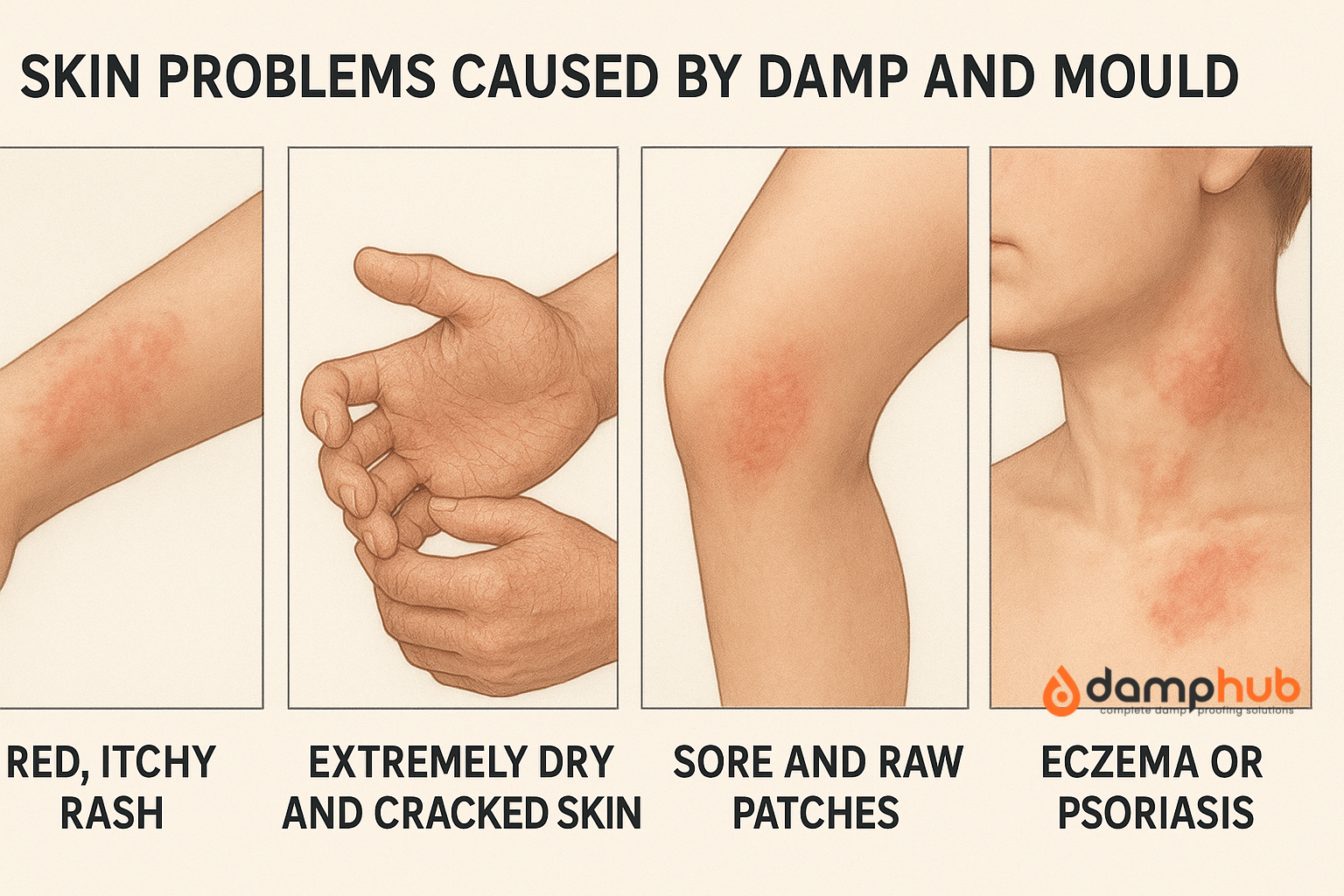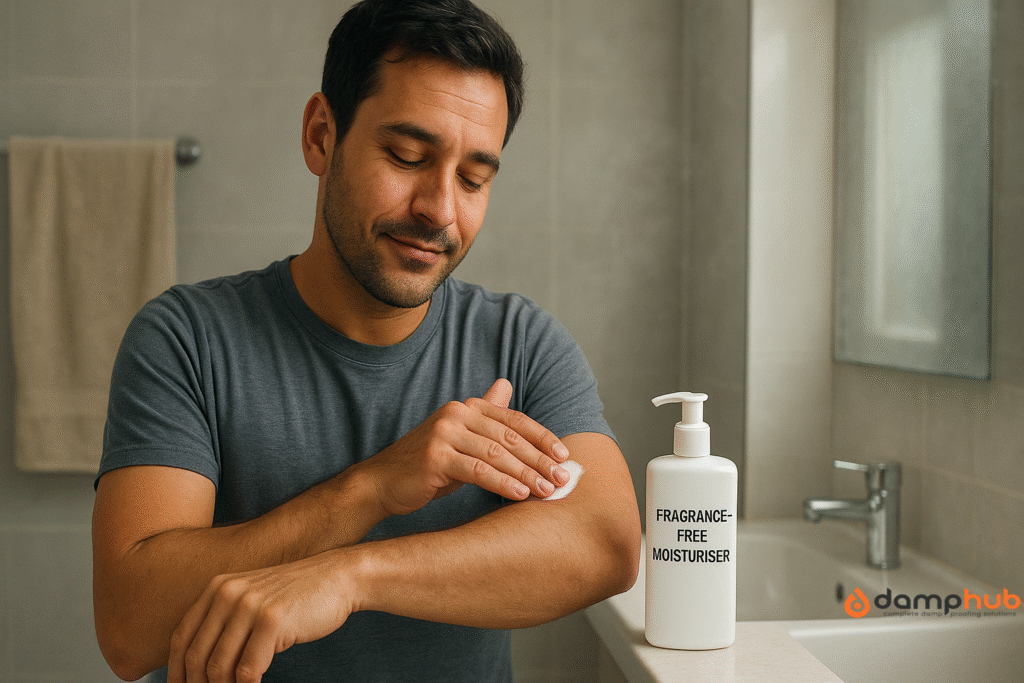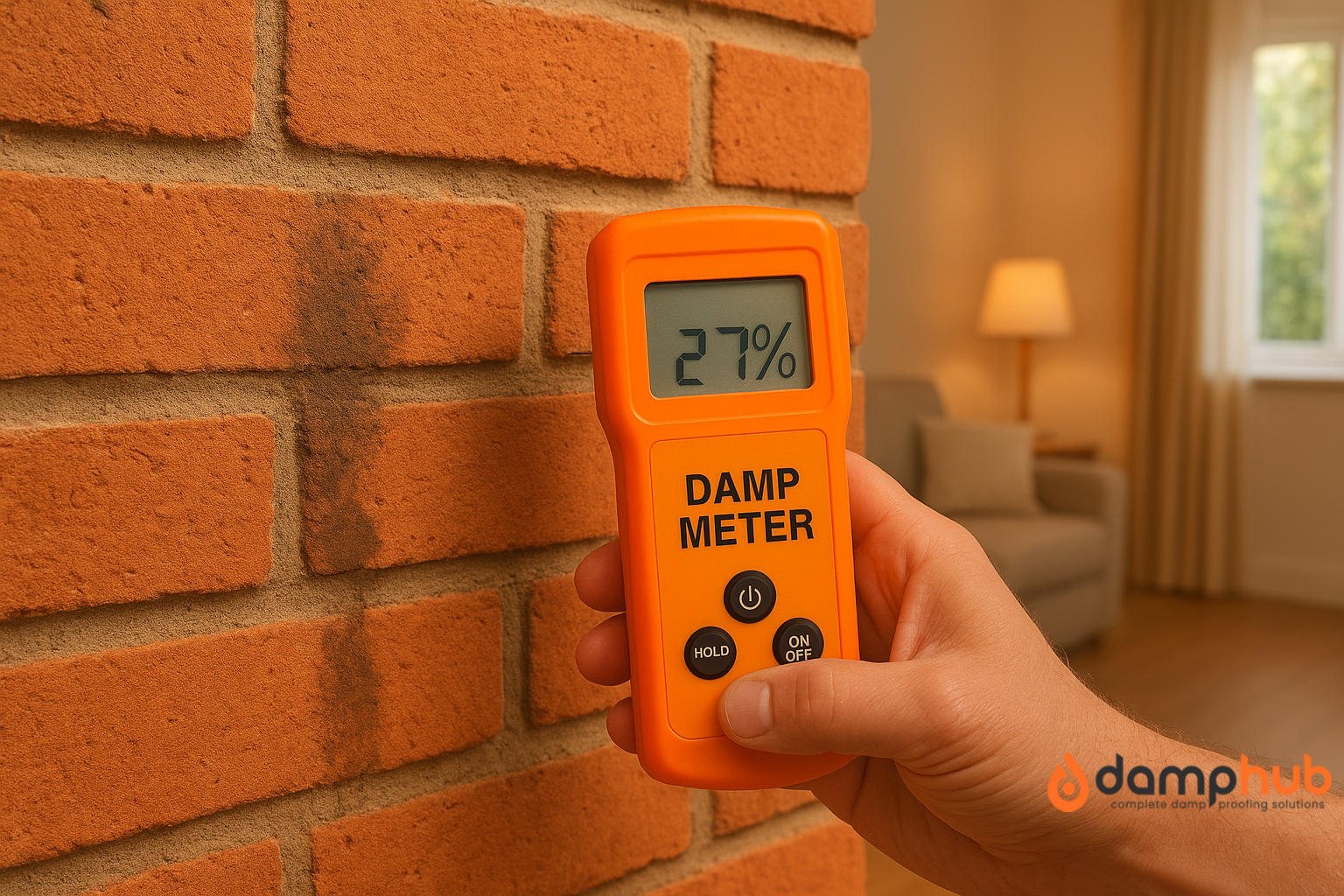
You’ve probably noticed damp for the usual reasons—paint peeling, wallpaper lifting, that musty smell that clings to fabrics no matter how much you air out the room. Most people stop there. They grumble about it looking ugly or damaging the plaster. What doesn’t usually get mentioned is what damp does to your skin. And it really can. So, can a damp house cause skin problems? Yes, and for many people, the signs are staring them in the face long before they join the dots.
Think about it. Damp is basically a breeding ground for mould and bacteria. Those spores end up in the air, and you breathe them in or they land on your skin. For someone with sensitive skin, that’s enough to trigger irritation. For others, it might mean eczema flares, itchy rashes, or dryness that refuses to shift. It’s not dramatic like a broken pipe flooding your living room—it’s slow, creeping, and easy to miss until you realise it’s affecting you every single day.
Related article: Can a Damp House Make You Sick?
What Does Skin Problem From Damp Look Like?
Here’s the thing about skin issues caused by damp: they don’t come with a handy label. No one wakes up with “mould rash” stamped on their arm. Instead, it looks like a mix of other everyday conditions, which makes it easy to dismiss.
Maybe you’ve had:
- A red, itchy rash that pops up and disappears in cycles.
- Skin so dry it cracks, even when you’re moisturising religiously.
- Patches behind your knees, on your arms, or around your neck that feel sore and raw.
- Existing problems—eczema, psoriasis—that suddenly seem worse without explanation.
And here’s a pattern many people notice: when they leave the house—maybe a weekend away, a holiday, or just a full day out—the skin starts calming down. Then, once they’re back home, the itchiness creeps back in. That back-and-forth is often the giveaway.

How To Test If Your Damp House Is Making You Sick In The UK?
Testing whether your house is making you ill sounds dramatic, but in the UK, with our damp-friendly climate, it’s a fair question. The good news? You don’t need expensive kit to start joining the dots.
Can a damp house cause skin problems? Simple checks you can do:
- Notice the timing: If skin irritation gets worse at home but eases when you’re away, that’s a red flag.
- Look for other clues: Sneezing fits, night-time coughing, or headaches that lift once you step outside all add weight to the suspicion.
- Inspect hidden spots: Behind wardrobes, under windows, or in shadowy corners. Black fuzz or water-stained patches aren’t just ugly—they’re allergen factories.
- Use a humidity monitor: A £10–£15 gadget can reveal if levels spike over 70% after cooking or drying clothes indoors.
- Call in a damp surveyor: The most reliable option. A damp surveyor has the tools to confirm damp and pinpoint its exact source.
Pro Tip
Keep a little notebook. Jot down when your skin flares up, which room you were in, and whether you’d been outside earlier. Over a couple of weeks the pattern usually shows itself—it’s like detective work for your health.
How To Treat Skin Problems From Damp In A House
So you have the answer to today’s question, “Can a damp house cause skin problems?”. Now what? The truth is, you have to deal with it on two fronts: caring for your skin and sorting out the house. Treat one without the other, and you’ll keep going in circles.
For your skin, try:
- Using fragrance-free moisturisers that repair the skin barrier.
- Taking short, lukewarm showers instead of hot ones that dry skin out.
- Applying barrier creams or emollients regularly to lock in moisture.
- Using antihistamines if mould spores are triggering itchiness.
- Seeing your GP for stronger creams or medication if rashes are spreading or persistent.
For more guidance on how to deal with damp in your house, read our other articles on: How to Treat Rising Damp: A Complete Guide for UK Homeowners and How to Treat Damp Walls Internally: A Step-by-Step Guide

👉 But remember: creams only give temporary relief if the damp’s still there. It’s like putting a plaster on a leaking pipe—you’ll feel better for a while, but the root problem keeps feeding itself in the background.
How Can You Prevent Skin Problem Due To Damp In House
After knowing the answer to “Can a damp house cause skin problems?, now you need to know how you can stay safe. Prevention isn’t glamorous, but it’s the most effective way to stop damp wrecking your skin (and your house). Most of it comes down to daily habits rather than huge, expensive fixes.
Can a damp house cause skin problems? Simple prevention habits:
- Keep rooms at an even temperature to reduce sudden condensation build-up.
- Open windows after showers, even if it feels chilly.
- Run extractor fans for a while after cooking to clear steam.
- Dry clothes outdoors where possible, or use a dehumidifier indoors.
- Wipe down condensation on windows each morning before mould forms.
- Fix small leaks quickly—even a drip under the sink can cause a permanent damp patch.
Good To Know
Certain houseplants, like Boston ferns or peace lilies, can actually soak up a bit of moisture from the air. They won’t solve damp, but they’ll freshen up the room and chip away at excess humidity.
How To Get Rid Of Damp Completely
This is the hard truth: once damp digs in, it rarely leaves without a proper fix. You can bleach a patch of mould, but it’ll creep back if the underlying cause isn’t dealt with. The right solution depends on the type of damp you’re dealing with.
Can a damp house cause skin problems? Common types of damp and fixes:
- Condensation damp: Often improves with better ventilation and heating.
- Rising damp: Caused by moisture creeping up from the ground; may need a new damp proof course or chemical injections (professional job).
- Penetrating damp: Usually down to roof leaks, cracked brickwork, or faulty gutters letting water seep in. Repairing the source allows the wall to finally dry.
Good To Know
Certain houseplants, like Boston ferns or peace lilies, can actually soak up a bit of moisture from the air. They won’t solve damp, but they’ll freshen up the room and chip away at excess humidity.
Try This
If you’re sceptical about how bad your damp problem really is, put a dehumidifier in the worst room and run it for a week. Check the tank. The amount of water it pulls from the air is often shocking—seeing it collected in litres makes the problem feel real in a way stained wallpaper never could.
Can A Damp House Cause Skin Problems: Questions Answered

-
Is it safe to live in a damp house?
Not for long. You might cope for a while, but over time, the risks build up. Damp environments can trigger breathing problems, skin irritation, and allergies.
-
How much of a problem is damp?
It’s bigger than most people assume. It damages plaster, wood, and insulation, while also creating long-term health issues if ignored.
-
What is the main cause of damp in a house?
It depends, but poor ventilation, leaks, and failed damp proofing are the usual suspects.
-
How do I find out where damp is coming from?
Sometimes you can spot it—patches, bubbling paint, mouldy corners. If it’s hidden, a damp survey is the quickest way to find the source.
-
Damp in house who to call?
A damp proofing specialist. They’ll diagnose the type of damp and offer proper solutions. To see more information, make sure to read the full guide: Damp in house who to call.
-
Can you get a rash from wearing damp clothes?
Yes. Damp clothes keep your skin wet, which encourages irritation and sometimes fungal infections.
-
Why do I get rashes when I get wet?
It could be sensitive skin, a rare condition like aquagenic urticaria, or simply the fact that damp clothes trap bacteria and mould against your skin.






